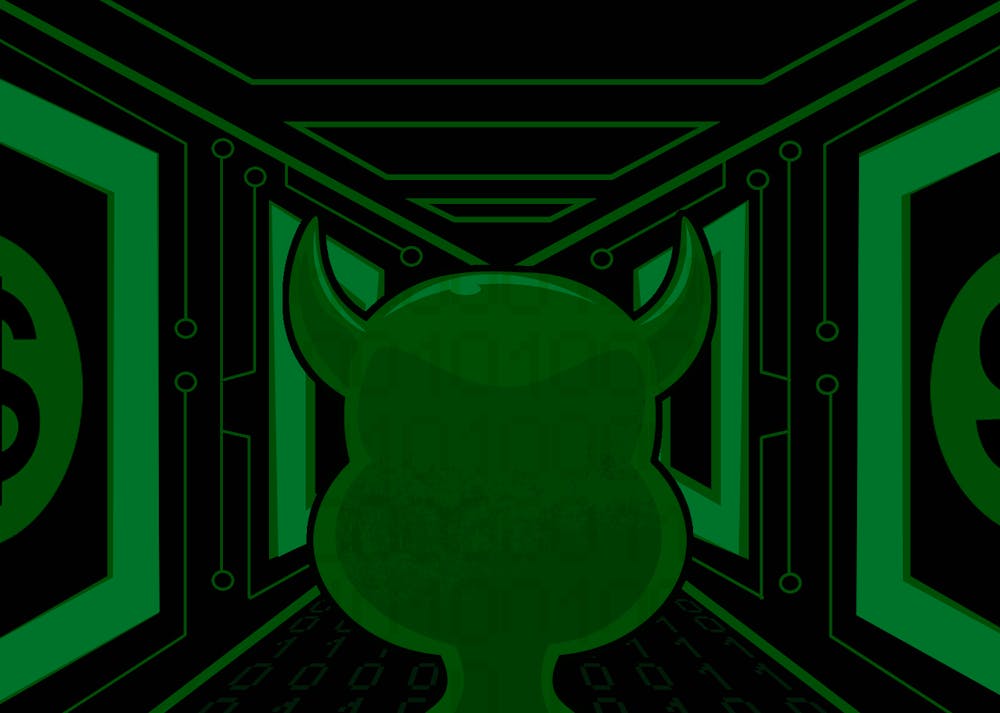Ethical concerns surrounding cryptocurrency and NFTs have brought blockchain, the technology that links them together, to the center stage of cybersecurity solutions. Despite its fame, blockchain is not the only viable option for cybersecurity.
While blockchain occupies a unique space between science and culture, its popularity should not shroud other solutions to cybersecurity challenges. ASU's efforts to research blockchain and other technology focuses almost exclusively on the advancements in the tech, not the business, creating space for more complex research.
Blockchain
Blockchains work by giving data a unique name, then stringing the names together, so the name cannot be changed without changing all the other attached blocks. The blockchain is also stored on a decentralized network of users, with partial duplications and copies of data to ensure consistency.
The Blockchain Research Lab was started in 2017 to study the ways these systems could offer more privacy and transparency. It was established with a grant from the Dash Treasury Fund to study potential mass adoption of the Dash Network. Dragan Boscovic is the co-founder of the lab and research professor at the School of Computing and Augmented Intelligence.
"(The Dash Treasury Fund was) very interested to basically do something with ASU and me, and they offered the first grants for the students to work on the blockchain-related project. So during 2017, I think we did get almost $400,000 from them in order to start the project," Boscovic said.
While the lab was supported by Dash Network, it covers a multitude of projects. One of these projects was MedFabric4Me, which won the Community Choice Award at the NuCypher + CoinList Spring Hackathon. The project researched the way blockchain could be used to protect privacy and efficiently send records in the medical system.
"It can be an NFT digital twin of you or your house that is stored in a wallet. And each time you go to a specific doctor, you can give them access to some portion of that history on a need-to-know basis," Boscovic said.
Much like all of the lab's projects, this one focuses on the technical aspect of blockchain, even when it is applied to other fields.
"Here at ASU, I'm more on the technology side. Just being a member of the faculty at SCAI makes me focus more on the technology side, because that is what students expect to learn," said Boscovic. In this lab, blockchain is seen as the ideal tool for privacy and security.
Trusted execution enviornments
However, blockchain is not the only tool for cybersecurity. Adil Ahmad is an assistant professor at the School of Computing and Augmented Intelligence. He teaches at ASU, and researches the rapidly expanding area of hardware-assisted trusted execution environments (TEEs). TEEs use the hardware in a computer to build trusted enclaves for data that can not be accessed by unpermitted software, including from the cloud or from the system software.
"As a result, we can use those cryptographic properties and these cryptographic mechanisms to know what exact software is running on this machine and to send our data only to software that we actually end up trusting," said Ahmad.
This type of security is notable because it uses the hardware the computer already runs on.
"My work is definitely always looking at it from a hardware perspective. Like how can we use, how can we leverage the existing hardware that we have and retrofit it for more secure computation, or leverage or design," said Ahmad.
The research of TEEs is a rapidly growing field.
"It was a new area when I started my PhD, which was back in 2016. But over the years we've seen a lot of updates," said Ahmad.
For example, in 2020, Intel started the IntelSGX program to use TEEs to protect the security of patient data, while still allowing it to be transferred to other healthcare professionals. This approach does not use the blockchain, like MedFabric4Me, and shows the field-wide interest in cybersecurity research for healthcare data.
Privacy and future concerns
Outside of the Blockchain Research Lab, law students and Barrett, The Honors College students can learn about blockchain technology and relevant law in the blockchain and cryptocurrency class. David Mccarville is an adjunct faculty at ASU and one of the originators of the class in 2018. Mccarville teaches the Bitcoin unit, primarily focusing on the legal aspects of the rapidly changing technology.
"It is an intersection of a lot of different areas of law … it raises issues relating to constitutional law, to freedom of speech. It also raises, of course, securities law issues, commodities law issues, federalism issues," said Mccarville.
Mccarville also focuses on the connection between blockchain and the cypherpunk movement. In the 1990s, the cypherpunk movement saw the digital age as a threat to privacy, and saw encryption and anonymity as the solution.
"The whole cypherpunk mentality is that we should be thinking how to use encrypted communications to protect ourselves and our freedom from manipulation by third parties. It's bigger than just bitcoin and cryptocurrency prices going up and down," Mccarville said.
Despite its prevalence as a security solution, Ahmad referenced one of the future risks to bitcoin and cybersecurity as a whole, which is the eventual development of quantum computers. While not in existence yet, quantum computers could crack the cryptography that most computers and systems, including blockchains, are dependent on.
Sophia is a senior studying biological sciences. This is her fifth semester with The State Press. She has also worked as a science and technology reporter.




